Are you looking for a hassle-free way to ensure someone else can pick up your prescriptions on your behalf? Writing a simple authorization letter can make the process smooth and efficient. This short yet effective document provides clarity and peace of mind both for you and the pharmacy staff. Let's dive into the essential components of this letter to get you started!

Clear Identification Details
When authorizing another individual to collect prescriptions on your behalf, it is essential to provide detailed identification information. This includes your full name, address (including city and zip code), date of birth (format: MM/DD/YYYY), and any relevant identification numbers, such as a driver's license number or patient ID number which are crucial for verifying your identity. The authorized person's full name, relationship to you, and their contact information must also be included for clarity. It may be necessary to specify pharmacy details including the pharmacy name and address to prevent any confusion during the pickup process. Additionally, including the prescription numbers or medication names ensures that the authorized party can retrieve the correct medications without delays. Always consider signing and dating the authorization to affirm the legitimacy of the request.
Explicit Authorization Statement
An explicit authorization statement serves as a formal document allowing a designated individual to collect medical prescriptions on behalf of another person. This statement includes essential details such as the full name of the patient, the specific medications to be retrieved, and the name of the authorized representative. Additionally, it often requires both the patient's signature and the date to validate the authorization. Medical institutions prefer clear and concise language to ensure compliance with health privacy regulations, reinforcing patient confidentiality while facilitating the pick-up process for necessary medications. Proper identification of the authorized person may also be required at the pharmacy to ensure the security and integrity of the prescription retrieval process.
Contact Information
The authorization to designate another individual for prescription pickup is fundamental in healthcare settings. Patients may require assistance due to various circumstances, including mobility issues or time constraints. For instance, in major cities such as New York City, where pharmacies like CVS and Walgreens cater to numerous customers daily, clear communication of authorization is critical. Patients must provide their name, address, phone number, and date of birth, ensuring the pharmacy can verify their identity accurately. The designated person, often a family member or friend, must also present identification upon arrival, confirming they have permission to collect medications. This process also safeguards sensitive health information, aligning with privacy regulations like HIPAA, providing peace of mind in healthcare transactions.
Specific Prescription Details
Authorizing an individual to retrieve prescriptions requires clear identification of the medication and patient. The prescribed medication, such as Amoxicillin 500mg (indicated for bacterial infections), should be specified alongside the patient's full name, date of birth, and any associated pharmacy details, such as location (e.g., CVS Pharmacy, 325 Main Street). Including the prescription number, usually a six to eight-digit identifier unique to each prescription, aids verification and retrieval. Additionally, providing the authorized person's full name and relationship to the patient ensures proper compliance with privacy regulations, allowing them to legally collect medications on behalf of the patient.
Signatures and Date
Prescription pick-up authorization allows designated individuals to collect medications on behalf of patients. Patients must provide detailed information, including the patient's name, date of birth, and address, to ensure the pharmacy correctly identifies the individual. The authorized person's name, phone number, and relationship to the patient should also be specified. Signatures are required to confirm consent, with a date indicating when the authorization was created. This document typically remains valid for a specified period, ensuring clarity on the timeframe during which the authorized individual can act on behalf of the patient. Proper documentation helps maintain privacy and compliance with health regulations such as HIPAA (Health Insurance Portability and Accountability Act) in the United States.

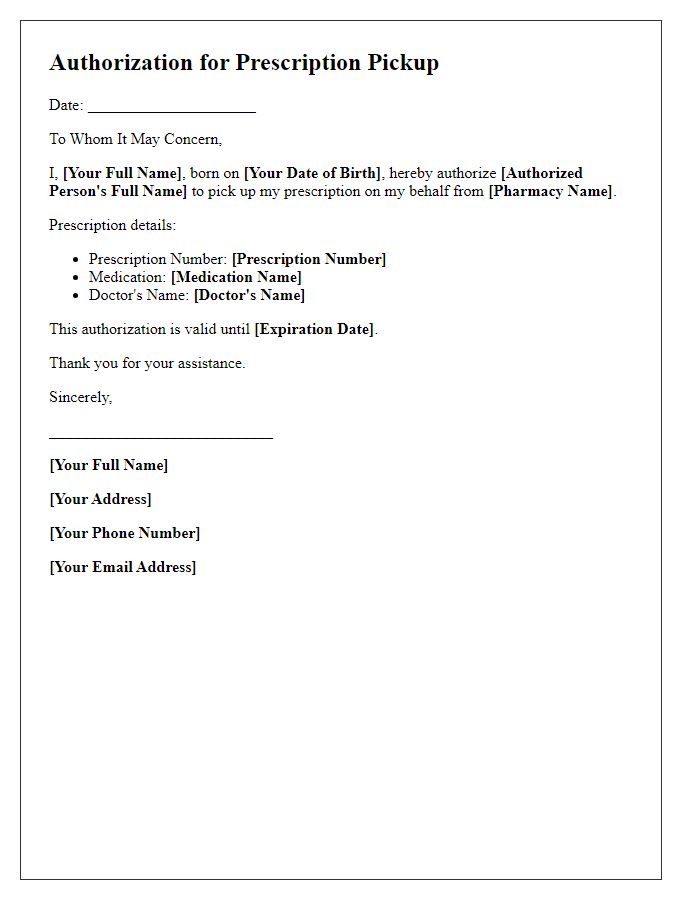

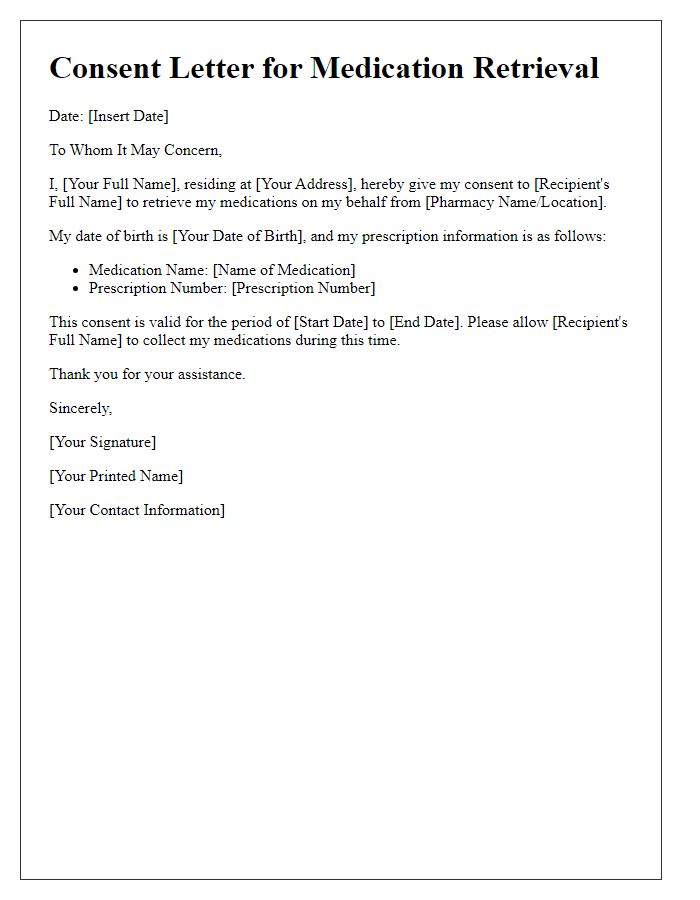
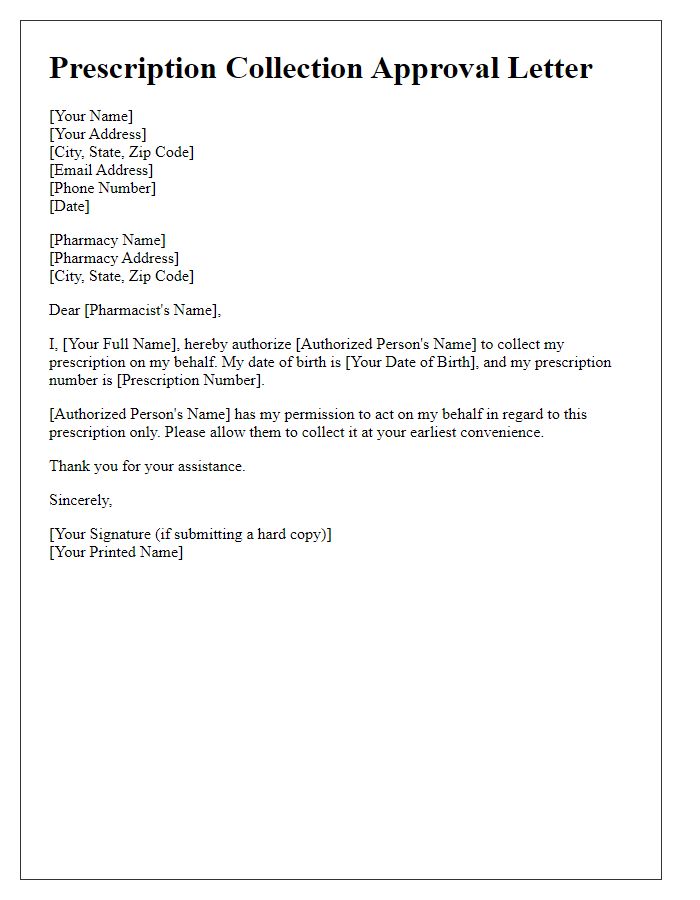
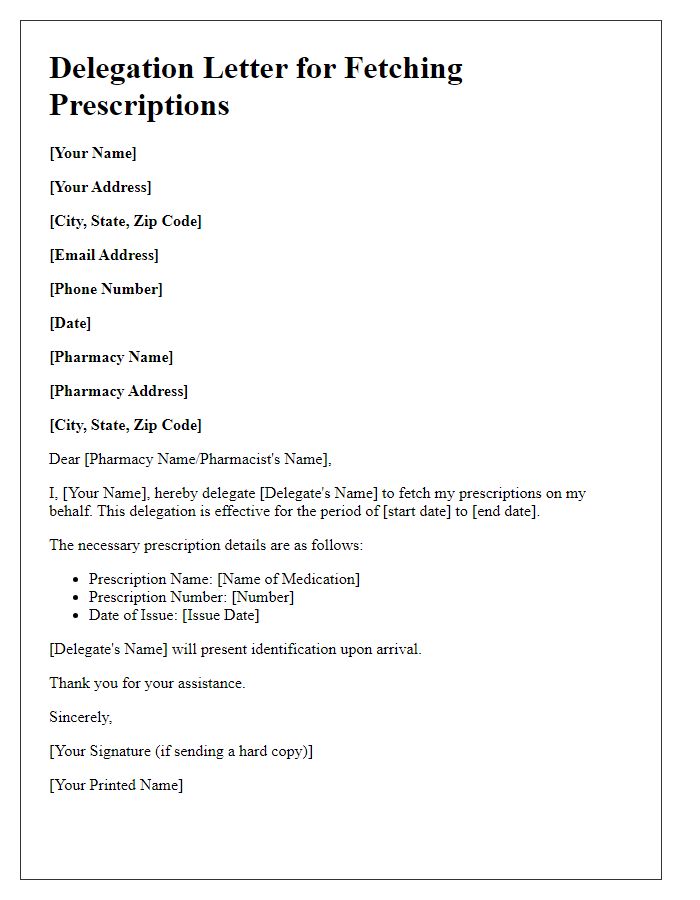
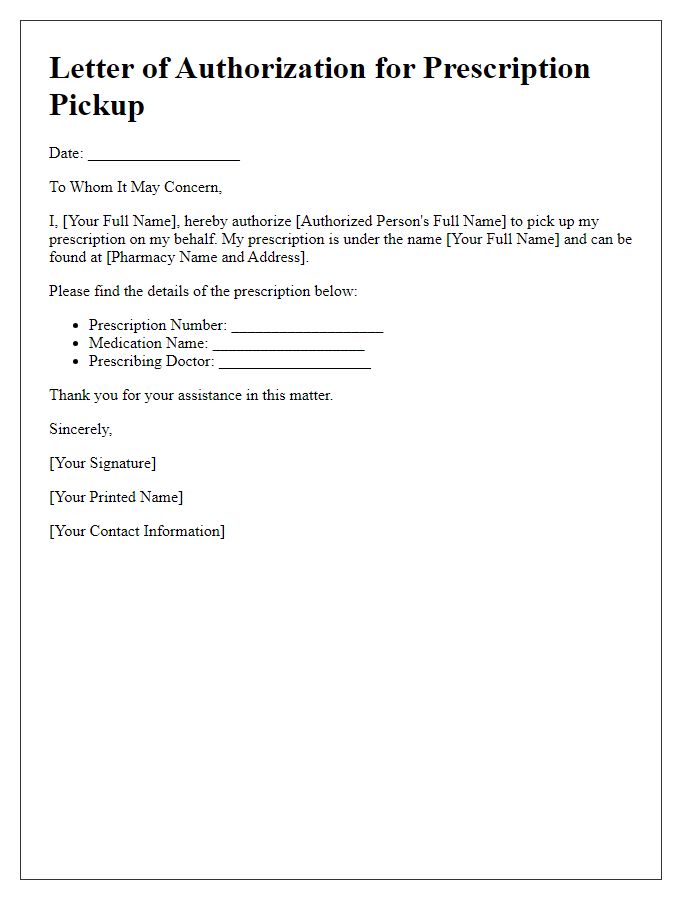
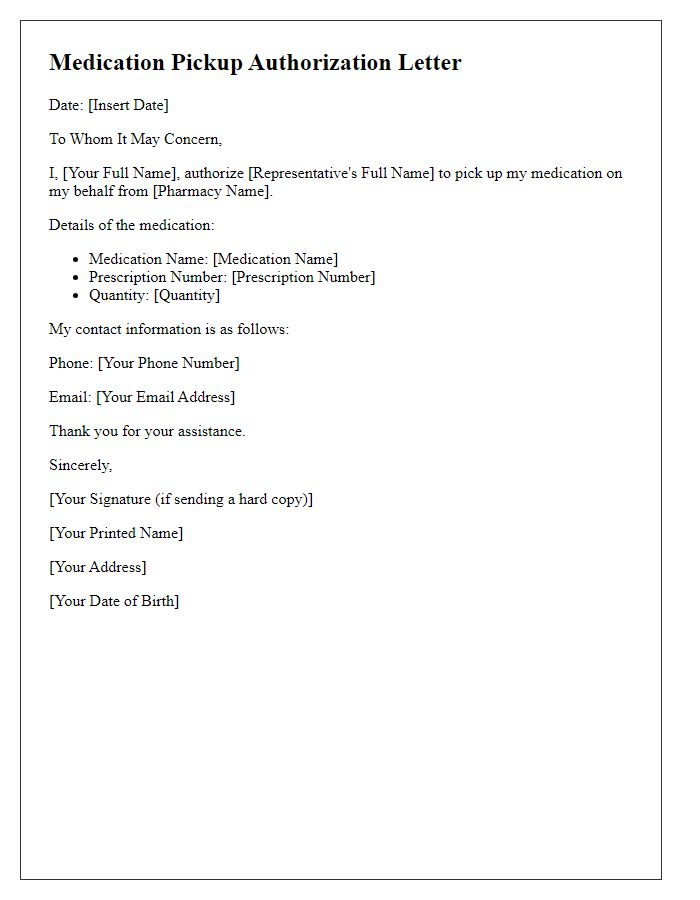
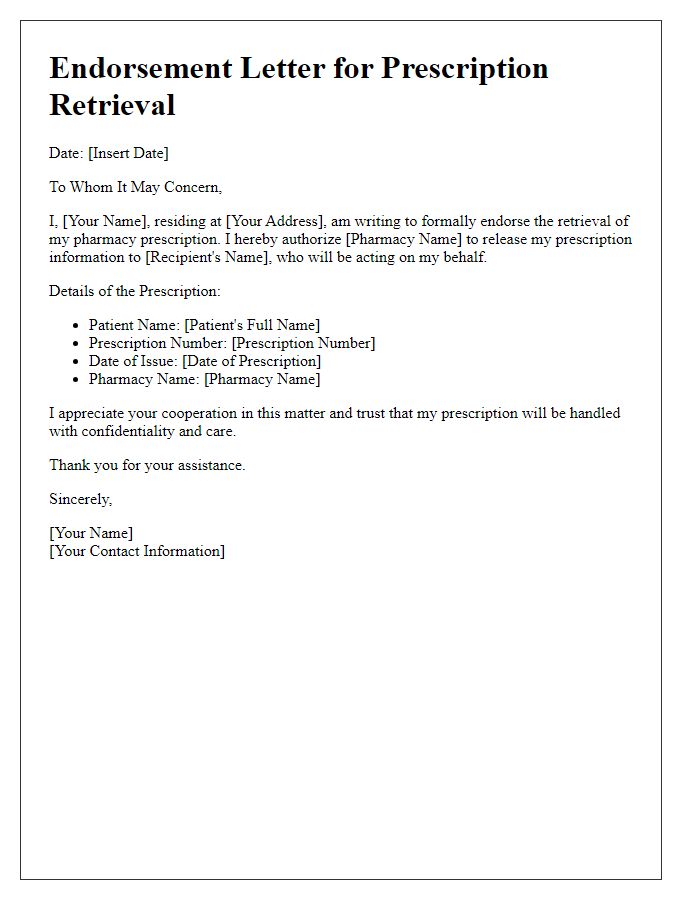
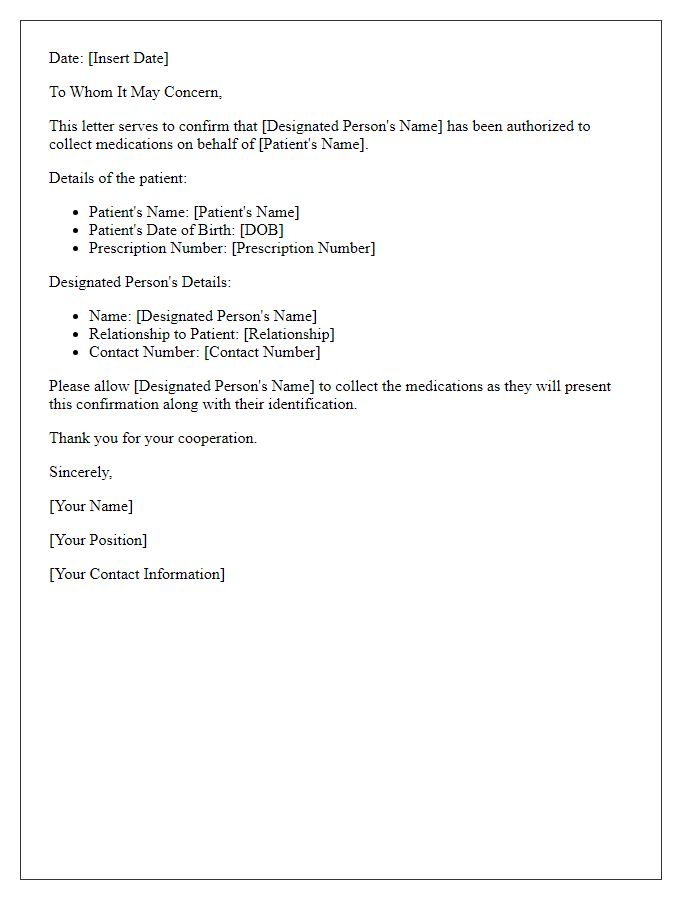
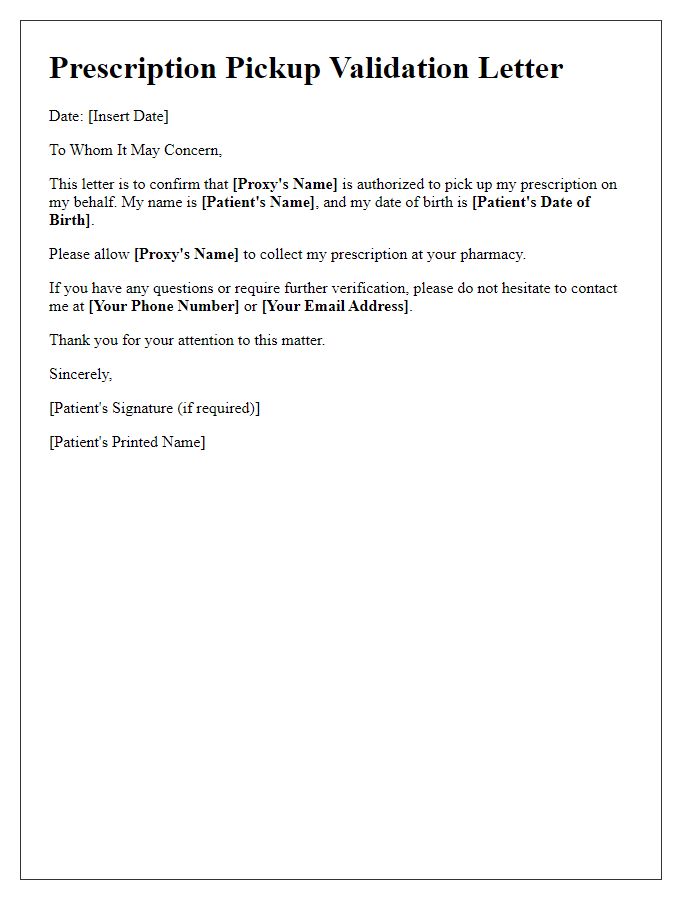


Comments